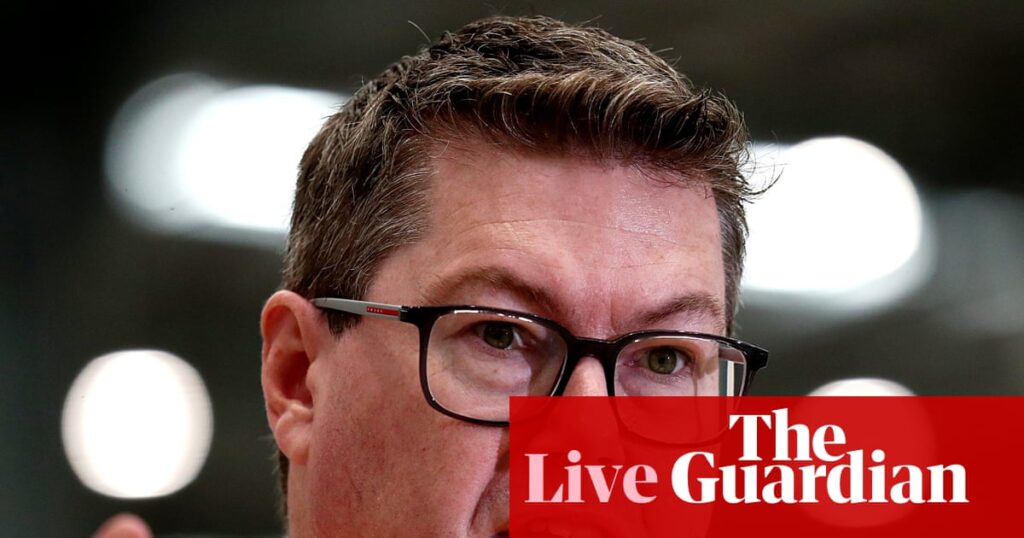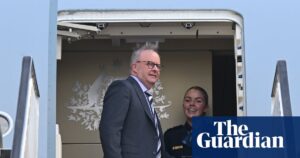
Australia’s political landscape is currently dominated by a heated debate over climate policy and a significant defence agreement with Papua New Guinea (PNG) that is on the verge of completion. Pat Conroy, the Minister for Defence Industry, expressed optimism about finalizing the defence pact with PNG, emphasizing the importance of respecting the sovereignty and processes of the Pacific nation.
Conroy stated, “I’m confident, but we’re respecting the processes of Papua New Guinea and letting them go through their processes. That’s really important that we respect their sovereignty. We’re not like other countries. We don’t come in and try and impose our will on the Pacific family.”
Climate Policy Sparks Controversy
Meanwhile, a landmark climate risk assessment has ignited a political firestorm. Nationals Senator Matt Canavan dismissed the report as a “cynical attempt to spread fear and panic,” criticizing the government for allegedly using the report as a marketing exercise. The assessment, released by the Albanese government, warns of severe disruptions to every aspect of Australian life due to climate change.
Canavan argued, “The problem is the headline figures are never as bad as the detailed science that underlies it. It reads like the Book of Daniel, not a government report. I mean, I like government reports that are sober and reasonable.”
The climate assessment predicts a 444% increase in heat-related deaths in Sydney and a 423% increase in Darwin under a 3C warming scenario.
Political Repercussions and Leadership Challenges
The climate report has also intensified internal conflicts within the Liberal Party. Andrew Hastie, the shadow home affairs minister, threatened to resign from the frontbench if the party continues to support a net zero by 2050 policy. Hastie’s stance reflects a broader discontent among some Coalition MPs who view the net zero target as detrimental to Australia’s economy.
Hastie remarked, “I’ve nailed my colours to the mast. I went on Four Corners, and I said the net zero policy is a straitjacket for our economy and our country, and I believe that.”
This internal strife follows the recent dismissal of Jacinta Nampijinpa Price from the shadow ministry for not adhering to party solidarity rules. The Liberals are currently reviewing their policies after a significant electoral defeat in May, with an announcement expected by year’s end.
Technological Transformation and Safety Regulations
As political debates rage, Australia is also grappling with technological advancements. Tim Ayres, the Minister for Industry and Innovation, advocates for worker involvement in AI integration, emphasizing the need for proper support and training. Speaking at the National Tech Summit in Sydney, Ayres highlighted the potential of AI to drive economic growth and improve living standards.
Ayres stated, “Adopted properly, AI can help Australia advance its scientific and research objectives, drive decarbonisation across the economy, revitalise industry, enhance the export competitiveness of Australian manufactured goods, boost productivity and lift the living standards of all Australians.”
In parallel, Australia’s eSafety Commissioner has issued new guidance for online safety, requiring social media platforms to implement age verification measures to protect under-16 users. The guidance emphasizes minimally invasive techniques to determine user age, avoiding reliance solely on government IDs.
Infrastructure Expansion at Sydney Airport
In a bid to accommodate increasing passenger numbers, Sydney Airport has announced its most significant expansion since the 2000 Olympics. The expansion will connect the T2 and T3 domestic terminals to international flights, adding up to 14 new international gates. This development aims to handle a projected increase in international passengers from 16 million to 36 million annually by 2045.
Scott Charlton, Sydney Airport’s CEO, commented, “This plan is about building the future of Australia’s gateway… [It] will be the most significant development at Sydney airport since the Olympics, and will unlock greater capacity across all terminals.”
The expansion comes as the Western Sydney International Airport, set to open in 2026, prepares to compete by initially handling 8.4 million passengers annually, with plans to significantly increase capacity by 2063.
As Australia navigates these multifaceted challenges, the outcomes of these developments will shape the nation’s economic, environmental, and political future. The impending defence agreement with PNG, ongoing climate policy debates, technological advancements, and infrastructure expansions all signal a transformative period for the country.





